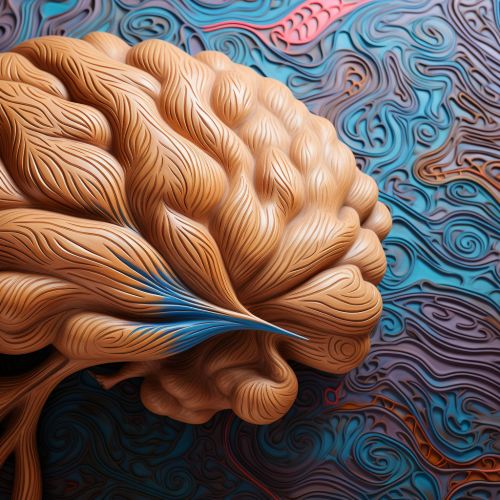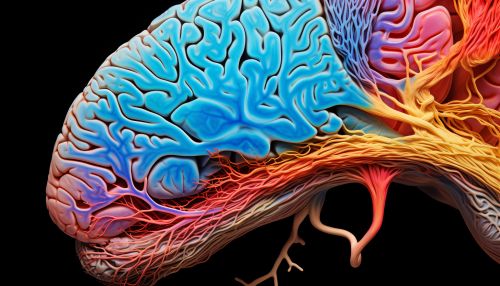Cognitive Neuroscience of Cognitive and Spatial Cognition
Introduction
Cognitive neuroscience is a branch of neuroscience that studies the biological processes that underlie cognition, with a specific focus on the neural connections in the brain which are involved in mental processes. It addresses the questions of how cognitive activities are affected or controlled by neural circuits in the brain. Cognitive neuroscience is a branch of both neuroscience and psychology, overlapping with disciplines such as physiological psychology, cognitive psychology, and neuropsychology. Cognitive neuroscience relies upon theories in cognitive science coupled with evidence from neurobiology, and computational modeling.
Cognitive and Spatial Cognition
Cognitive and spatial cognition are two fundamental aspects of our understanding of the brain. Cognitive cognition refers to how we process information, how we understand and organize our thoughts, and how we learn and remember. Spatial cognition, on the other hand, refers to how we understand and interact with our physical environment, including understanding and remembering spatial relationships between objects, navigating through our environment, and using spatial information to guide our actions.
Cognitive neuroscience seeks to understand how these cognitive and spatial processes are represented in the brain, how they are implemented in neural circuits, and how they influence our behavior. This involves studying both the brain's physical structure (its anatomy and physiology) and its functional organization (how its various parts communicate and coordinate their activities).
Neuroanatomy of Cognitive and Spatial Cognition
The neuroanatomy of cognitive and spatial cognition involves several key areas of the brain. These include the prefrontal cortex, the parietal cortex, the hippocampus, and the cerebellum.
The prefrontal cortex is involved in planning complex cognitive behavior, personality expression, decision making, and moderating social behavior. This brain region has been implicated in planning, attention, and memory.
The parietal cortex is involved in integrating sensory information from various parts of the body, understanding spatial relationships, and coordinating voluntary movements. It is also involved in visuospatial processing, spatial attention and mapping of numbers onto space.
The hippocampus is involved in the formation of new memories about experienced events. It plays important roles in the consolidation of information from short-term memory to long-term memory, and in spatial memory that enables navigation.
The cerebellum is associated with regulation and coordination of movement, posture, and balance. It is also involved in some cognitive functions such as attention and language, and in regulating fear and pleasure responses.


Cognitive Processes and Their Neural Basis
Cognitive neuroscience has identified several cognitive processes and their neural basis. These include attention, memory, language, and executive functions.
Attention is the cognitive process of selectively concentrating on one aspect of the environment while ignoring other things. Attention is regulated by the frontal and parietal lobes.
Memory is the cognitive process by which information is encoded, stored, and retrieved. Memory is primarily associated with the temporal lobe, particularly the hippocampus.
Language is the cognitive process by which we communicate using a system of signs, symbols, or behavior. Language processing is primarily associated with Broca's area in the frontal lobe and Wernicke's area in the temporal lobe.
Executive functions are a set of cognitive processes that are necessary for the cognitive control of behavior. These include basic cognitive processes such as attentional control, cognitive inhibition, inhibitory control, working memory, and cognitive flexibility. Executive functions are primarily regulated by the prefrontal cortex.
Spatial Processes and Their Neural Basis
Spatial cognition involves several key processes, including spatial perception, spatial memory, spatial reasoning, and spatial navigation. These processes are regulated by several key areas of the brain, including the parietal cortex, the hippocampus, and the entorhinal cortex.
Spatial perception is the cognitive process that allows us to understand and interpret the spatial relationships between objects in our environment. This process is primarily regulated by the parietal cortex.
Spatial memory is a cognitive process that allows us to remember the locations of objects in our environment, as well as the spatial relationships between objects. This process is primarily regulated by the hippocampus.
Spatial reasoning is the cognitive process that allows us to understand, reason about, and make predictions about spatial relationships in our environment. This process is primarily regulated by the parietal cortex.
Spatial navigation is the cognitive process that allows us to navigate through our physical environment. This process is primarily regulated by the hippocampus and the entorhinal cortex.
Conclusion
Cognitive neuroscience provides a framework for understanding the neural basis of cognitive and spatial cognition. By studying the brain's structure and function, cognitive neuroscientists are able to map cognitive and spatial processes onto specific brain regions and neural circuits. This understanding can help us to understand how these processes are implemented in the brain, how they influence our behavior, and how they may be disrupted in neurological or psychiatric disorders.
